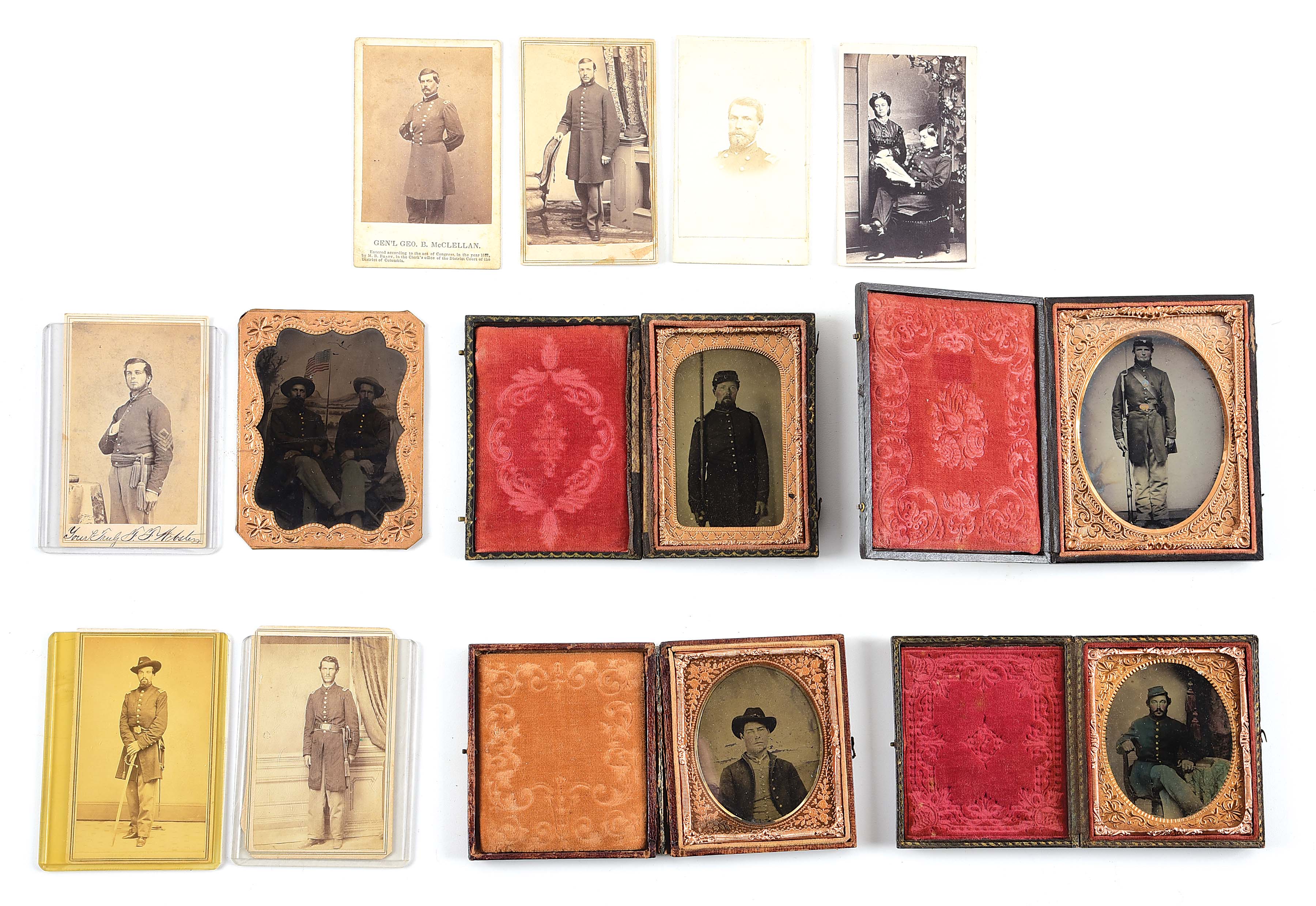Lot of 6 photographs. Stereoview of "General Grant & His War Horse." On mount of J.T. Jarvis' Stereoscopic Views, Washington, DC. Grant had a number of war horses, but this one, Cincinnati, was one of his favorites. Cabinet card of Alfred Howe Terry (1827-1890) Terry trained as a lawyer and during the 1850s was a clerk of the Superior Court of New Haven County. With the outbreak of the Civil War, Terry raised a regiment of Connecticut volunteers and led them at Bull Run. Terry continued to serve after the end of the Civil War, becoming George Custer's commanding officer. It was Terry's orders to wait until John Gibbon's troops could get in position that Custer ignored when he attacked the Native Americans at the Little Big Horn. Terry also dealt with the fallout from Custer's expedition into the Black Hills, against the treaty with the Sioux. He also sent Miles and Gibbon to stop Chief Joseph's flight into Canada. It would ultimately be Terry to whom Sitting Bull surrendered. CDV of Winfield Scott Hancock (1824-1886, USMA 1844). During the Civil War he stepped in to command units whose leaders had fallen, including at Gettysburg, an action for which he would eventually receive the Thanks of Congress. After the war he remained in the East, with HQ at Governor's Island, NY. CDV of George Henry Thomas (1816-1870, USMA 1840). He held a number of commands during the Civil War, both in the Eastern and Western Theaters. After the war he remained in Tennessee until reassigned to the Pacific coast in 1867. Thomas also received the Thanks of Congress for his actions at Nashville. CDV of Alexander Hays (1819-1864, USMA 1844). After the Mexican War, Alexander Hays resigned from the Army. He returned at the start of the Civil War, raising regiments of Pennsylvania Volunteers. He claimed to have fought particularly hard at Gettysburg, defending his home state. On the first day of the Wilderness battle, he was killed by a bullet through the head. CDV of Jesse L. Reno (1823-1862, USMA 1846). As with most of his classmates, he fought in the Mexican War, then taught mathematics at West Point. He also served on western expeditions. In July 1862 he was promoted to Maj. Genl. Vols. and assigned to the IX Corps. He was killed in the Battle of South Mountain in September 1862.
Lot of 6 photographs. Stereoview of "General Grant & His War Horse." On mount of J.T. Jarvis' Stereoscopic Views, Washington, DC. Grant had a number of war horses, but this one, Cincinnati, was one of his favorites. Cabinet card of Alfred Howe Terry (1827-1890) Terry trained as a lawyer and during the 1850s was a clerk of the Superior Court of New Haven County. With the outbreak of the Civil War, Terry raised a regiment of Connecticut volunteers and led them at Bull Run. Terry continued to serve after the end of the Civil War, becoming George Custer's commanding officer. It was Terry's orders to wait until John Gibbon's troops could get in position that Custer ignored when he attacked the Native Americans at the Little Big Horn. Terry also dealt with the fallout from Custer's expedition into the Black Hills, against the treaty with the Sioux. He also sent Miles and Gibbon to stop Chief Joseph's flight into Canada. It would ultimately be Terry to whom Sitting Bull surrendered. CDV of Winfield Scott Hancock (1824-1886, USMA 1844). During the Civil War he stepped in to command units whose leaders had fallen, including at Gettysburg, an action for which he would eventually receive the Thanks of Congress. After the war he remained in the East, with HQ at Governor's Island, NY. CDV of George Henry Thomas (1816-1870, USMA 1840). He held a number of commands during the Civil War, both in the Eastern and Western Theaters. After the war he remained in Tennessee until reassigned to the Pacific coast in 1867. Thomas also received the Thanks of Congress for his actions at Nashville. CDV of Alexander Hays (1819-1864, USMA 1844). After the Mexican War, Alexander Hays resigned from the Army. He returned at the start of the Civil War, raising regiments of Pennsylvania Volunteers. He claimed to have fought particularly hard at Gettysburg, defending his home state. On the first day of the Wilderness battle, he was killed by a bullet through the head. CDV of Jesse L. Reno (1823-1862, USMA 1846). As with most of his classmates, he fought in the Mexican War, then taught mathematics at West Point. He also served on western expeditions. In July 1862 he was promoted to Maj. Genl. Vols. and assigned to the IX Corps. He was killed in the Battle of South Mountain in September 1862.















Testen Sie LotSearch und seine Premium-Features 7 Tage - ohne Kosten!
Lassen Sie sich automatisch über neue Objekte in kommenden Auktionen benachrichtigen.
Suchauftrag anlegen